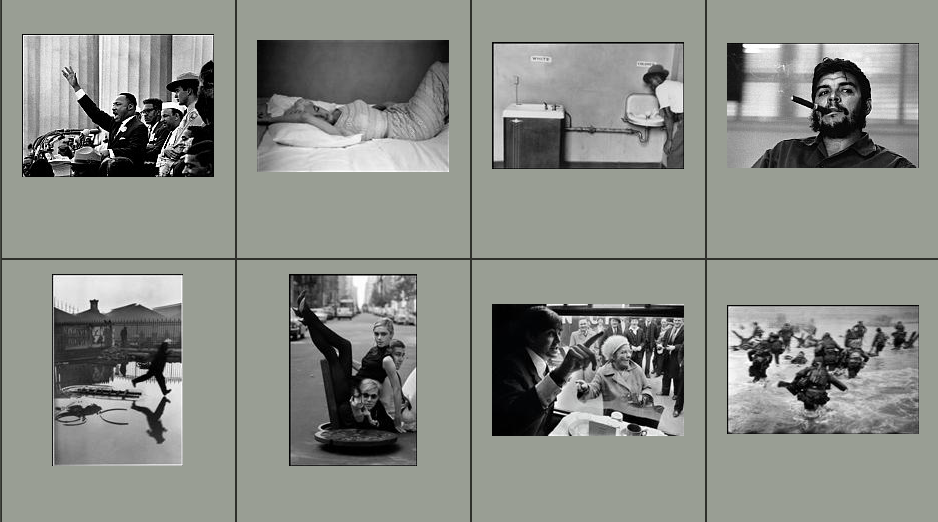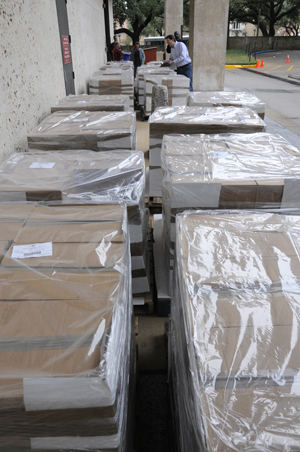
Image credit: Screen shot of Magnum Photos Digital Collection
H/T: Katherine Feo and George Royer
On Tuesday, the Harry Ransom Humanities Research Center
announced that the Magnum collection of photographs would be catalogued,
housed, and made accessible to scholars for research and to the public through
exhibitions. Magnum Photos was
founded in 1947 by Robert Capa and Henri Cartier-Bresson and several other
photographers as one of the first photographic cooperatives. While the Magnum website hosts the
“living archive” of over 500,000 images in a searchable digital library that is
updated daily, the HRC will preserve and make available the nearly 200,000
original press prints including several vintage prints dating back more than 60
years. In a press release
announcing the partnership between the HRC, Magnum Photos, and the new owner of
the original press prints, Michael S. Dell’s private investment firm MSD
Capital, Dr. Tom Staley—director of the Humanities Research Center noted, "This
is a singularly valuable collection in the history of photography [that] brings
together some of the finest photojournalists of the profession and spans more
than a half century of contributions to the medium. We are delighted to
make these remarkable materials accessible to researchers and students."
Archivists are, of course, both creators and collectors of
“value” and this collection is surely a valuable addition to the HRC. One of Dr. Staley’s collecting maxim’s – “Ten percent of an archive represents ninety percent
of its value” – indicates the relationship between the portion of an author’s
or artist’s papers that seem the most relevant and the rest of the collection
that the HRC must take along with that ten percent. (“Final Destination,” in New Yorker, D.T. Max, June 11 2007). This quote (and a conference paper written by Katherine Feo)
led me to consider the other ninety percent. Simply put, these valuable collections are massive. The same New Yorker article referenced above contains several anecdotes about the size of
the collections housed at the HRC.
For instance, Norman Mailer’s papers contained 25,000 letters, weighed in
at over 20,000 pounds, and was deposited here in Austin via a tractor trailer.

Arrival of the Magnum Collection
Image Credit: Pete English, www.utexas.edu
The arrival of the Magnum Photos collection came in two
trailer trucks and the journey from New York to Austin set Mark Lubell, Magnum
director, to worrying and checking the GPS tracker on the trailers every few
minutes (New York Times). I have to admit, I love the thought of
GPS trackers affixed to trailers full of photographs. Not that I don’t see the value in these images—this
collection is one I am anxiously awaiting to explore. There is, however, something striking in the image of two
trailers traveling south on I-81 loaded with one of today’s most significant
photographic collections and equipped with a global positioning tracker. This mental image raised for me a constellation
of questions surrounding the physicality of a photograph. Does the sheer size
of this two-trailers-large archive lend even more significance to each
individual photograph via its association with the collection? Does the “value” of the collection
follow these physical prints to Austin or remain with the members of the
cooperative who retain the rights to the images? In other words, what value do we attach to the physical
print as distinct from the image?
How does an archival world that is increasingly digital impact the value
of actual press prints?


Recent comments
2 years 29 weeks ago
2 years 44 weeks ago
2 years 44 weeks ago
2 years 50 weeks ago
3 years 4 weeks ago
3 years 4 weeks ago
3 years 4 weeks ago
3 years 6 weeks ago
3 years 6 weeks ago
3 years 6 weeks ago